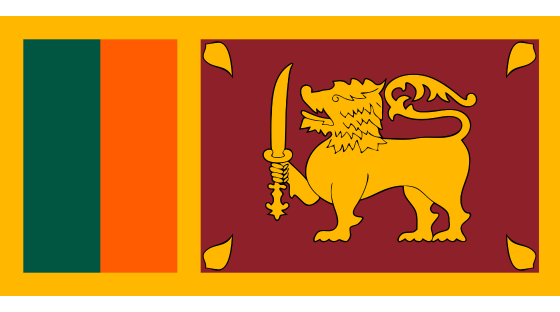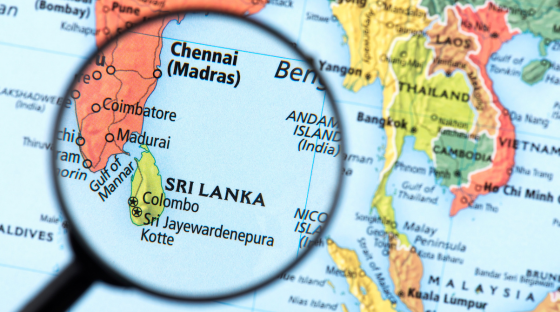-
Services
-
Software Project Delivery
-
Services
-
Solutions
-
Technologies
-
-
Network
-
Discover
-
Regions
-
Industries
-
Must-Read Guide
-
2026 Global Software Outsourcing Rates and Trends GuideDiscover why rates are just one aspect of the Accelerance Global Software Outsourcing Rates & Trends Guide, which offers valuable insights into the software development landscape.
-
-
-
Resources
-
Our Resources
-
Newest White paper
-
Aviation Ecosystem Modernization: A Holistic Approach for Meaningful TransformationModernize aviation by integrating people, processes, technology, and data
-
-
New eBook
-
 The True Cost of Software DevelopmentHidden costs can wreck your budget. Our new eBook breaks down the true cost of outsourcing—get your copy to stay ahead.
The True Cost of Software DevelopmentHidden costs can wreck your budget. Our new eBook breaks down the true cost of outsourcing—get your copy to stay ahead.
-
-
Featured White paper
-
Flow & Process OptimizationIn this white paper, you'll learn to streamline workflows, improve change management, and accelerate results.
-
-
-
About
-
About Accelerance
-
Our History
-
Accelerance: Our HistoryThere's great talent everywhere and great teams everywhere, which is the basis of the Accelerance model.
-
-
Software Without Borders
-
New Episode Every Week!Tune into our podcast Software Without Borders, the essential listen for technology leaders and business owners in the software sector who crave insights from the industry’s top minds.
-
-
Andy's Book
-
Synergea: A Blueprint for Building Effective, Globally Distributed Teams in the New Era of Software DevelopmentPeople are first and locations are secondary when it comes to software development success.
-
-
- Client Reviews
Sri Lanka

Overview
Sri Lanka is turning the corner after pitching into a severe social and economic crisis that’s required intervention by the International Monetary Fund. Negotiations around debt restructuring are ongoing, but the economy is forecast to rebound in 2024 after two years of contraction.
Known as “the teardrop of India”, the island nation has increasingly positioned itself as a quality, niche destination for ICT services, leveraging its geographical position as well as its relatively high-skilled, low-cost workforce. The government has ambitious plans for the sector, one of the country’s largest export earners, but an exodus of talent offshore has put some strain on the tech workforce.
The Accelerance Global Network is the most curated list of high-quality global teams ever assembled.
400
Developers
Total number of developers in our certified partner network by country
1
Certified Partner
Total number of certified partners in our global network by country.
17hrs
Time Travel (From NY)
Average flight time from NY to the major cities in the country.
80
Partner Innovation capability
The score reflects investment in STEM progrms and IT funding by country.
82
Partner Skill Level
Level of workforce skills and quality of education, including factors such as digital literacy, interpersonal skills, etc.
85
Partner Global Competitiveness
National productivity based on 12 core pillars, including government policy, infrastructure, economic stability, etc.
High
Software Outsourcing Readiness
Overall rating, based on the maturity of the tech sector, socio-political conditions, and on-the-ground research by Accelerance.

Talent Pool & Education
Before the pandemic, Sri Lanka’s IT industry employed more than 120,000 people and was the fifth-largest export earner, on track to become the top exporter within the next five years and double its employees. The country’s economic crisis derailed those goals. Cutbacks were seen across the sector and some companies set up temporary offices in neighboring countries, relocating staff to maintain business continuity.
As the economy shows signs of recovery, government initiatives such as tax incentives, infrastructure development, and the establishment of technology parks are encouraging both local and foreign investment in the sector. The Ministry of Education plans to introduce artificial intelligence and coding to the school curriculum with an emphasis on robotics, machine learning, data mining, computer vision, and related technologies.
By the end of 2024, Sri Lanka’s ICT sector aims to become a $3 billion dollar industry, and by 2030 it is projected to contribute $15 billion to the country’s digital economy, the Vice Chairman Federation of Information Technology Industry Sri Lanka, Indika De Zoysa, told an industry conference. “Sri Lanka will enter the third wave of technology during the digital transformation, with 750 tech companies, 1,000 IT and IT-infused startups, and 500 other technology startups in place.”
Language
Sinhala (or Sinhalese) and Tamil are the two official languages, but Sri Lankan engineers and developers are highly proficient in communicating in English, which is widely used in education, science, and commerce. Overall, about a quarter of the population speaks English, especially in urban areas and among the younger generations, a legacy of Sri Lanka’s history as a British colony prior to gaining independence in 1948.

Economic Outlook
Sri Lanka is out of intensive care but still in the trauma ward, reported one of the more colorful news headlines as the country began to emerge from its worst financial crisis in more than seven decades. Now, two years after announcing a debt default, the economy is showing the first signs of recovery. Inflation is falling after hitting a peak of 70%, interest rates are edging downwards and the highly volatile currency is fluctuating within an acceptable range. The fiscal deficit is also expected to gradually fall over the medium term due to consolidation efforts and a strong recovery in tourism.
A $2.9 billion International Monetary Fund reform program commenced in late March 2023 with the approval of an Extended Fund Facility. The tax burden is deeply unpopular, but Sri Lanka’s ability to deliver on its commitments will be crucial to tapping further budgetary assistance from multilateral financial institutions and retaining the goodwill of its sovereign creditors, reports the East Asia Forum. “While tax increases, market-based pricing on fuel, a shake-up of the welfare system, and a clampdown on spending are repairing the country’s public finances, the average citizen has suffered deeply.” A severely damaged policy infrastructure is also hampering the revival of Sri Lanka’s textile industry.
Political Conditions
In a major shift in the electoral landscape, 2024 saw a stark rejection by voters of traditional political parties that have ruled the country almost since independence from British rule in 1948.
Following the forced resignation in July of President Gotabaya Rajapaksa in response to Sri Lanka’s deepening economic crisis, a leftist coalition has swept to power and been given a powerful mandate to fight poverty and corruption. In September, Anura Kumara Dissanayake was elected president with 42% of the vote and, in parliamentary elections in November, the National People’s Power (NPP) coalition secured a two-thirds majority, winning 159 of 225 seats.
The significant shift away from the entrenched power of political elites such as the Wickremesinghes, the Kumaratungas, and the Rajapaksas has been attributed to a grassroots movement of lower-middle class Sinhala voters disillusioned by economic crises and corruption. However, even the Jaffna district, the heartland of ethnic Tamils, who have long been suspicious of Sinhalese leaders, voted in the coalition of Dissanayake, despite Dissanayake hailing from a Sinhala-majority town.
The swing was in large part a reaction to the financial crash in 2022 that led to months-long shortages of food, fuel and essential medicines, and subsequent austerity measures. “Enough is enough,” is how one commentator described the results, a rejection by the electorate of “the same old faces, the same old parties that have been hoodwinking us for too long.”
To ensure future unity and promised reform agenda, pundits warn, the new administration will need to heed Tamil demands for justice, accountability, and autonomy.
Learn more about our customer stories.
Looking for a customer story in a specific technology or industry? Discover compelling customer narratives within a specific technology or industry that resonate with your unique software development needs.
